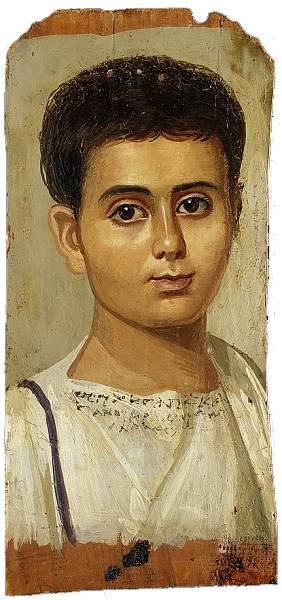Why do traditional cultures in general seem to get degraded into kitschiness once they come into contact with modernity? There isn't any kitschiness among traditional traditional cultures. You notice the same sort of thing among with "traditionally" oriented white folks too. You have, in no particular order, tacky madonnas, Evangelical praise songs, Vatican II masses, Thomas Kinkade, the prose style of Lord of the Rings and large swathes of country music.
I have remarked before about the bifurcation of modern aesthetics into two camps. High art has tended to eschew any sort of sentiment at all and gone in for either the overly abstract and intellectual, or else the disgusting and degrading.
Perhaps we just can't read the sentimentality in alien traditional cultures?
Or, perhaps the small scale sentimental stuff didn't get carved into giant marble I-am-Ozymandias-king-of-kings statues, so we don't have much of ancient kitsch left anymore? It could be that Ozymandias's mom had court artists do up lots of cute little statues and paintings of Ozymandias as a baby, as a toddler, going to the prom, beheading his first rebel, all that sort of thing that warms a queen mother's heart. But, that kind of art didn't weigh as much as Ozymandias's giant brutal marble statue in Shelley's poem, so, being more portable, it got carried off by looters, or tossed out in the trash, or just worn away by the elements over time.
For example, I only recently became aware of a trove of 2000-year old Roman Egyptian paintings, the Fayum mummy portraits, that families paid professionals to make to (presumably) remember lost loved ones. They only survived due to the dry climate.
And they are just heartbreaking. If you are thumbing through a history of art of the ancient world textbook, these  Fayum paintings often come last, after a long series of Egyptian-Babylonian-Greek-Roman art works intended to express aristocratic conceptions of the potential of human beauty, Ozymandias-like works intended to impose obedience, nouveau riche interior decoration, commercial pottery, and a lot of other stuff that is aesthetically impressive but doesn't make all that much of an immediate emotional impression on us. And then, at last, these cheap Fayum portraits are like a dagger to the heart, reminding us that the ancients were human beings like us who suffered emotional agonies when their ten year old children died.
Fayum paintings often come last, after a long series of Egyptian-Babylonian-Greek-Roman art works intended to express aristocratic conceptions of the potential of human beauty, Ozymandias-like works intended to impose obedience, nouveau riche interior decoration, commercial pottery, and a lot of other stuff that is aesthetically impressive but doesn't make all that much of an immediate emotional impression on us. And then, at last, these cheap Fayum portraits are like a dagger to the heart, reminding us that the ancients were human beings like us who suffered emotional agonies when their ten year old children died.
But, keep in mind that these Fayum portraits were semi-mass produced, using standard techniques. They probably aren't terribly realistic pictures of the deceased, being more like reproductions from various pre-existing templates of say, a pre-adolescent boy. I fear that if I were an educated, aristocratic resident of Alexandria and had seen them all my life, I'd roll my eyes and disparage them as kitschy.